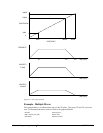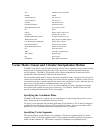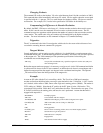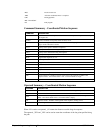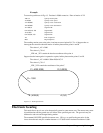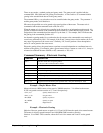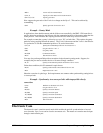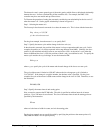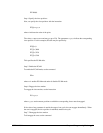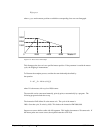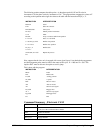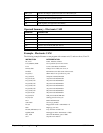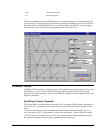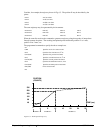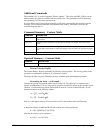
Chapter 6 Programming Motion • 80 USER MANUAL
The electronic cam is a more general type of electronic gearing which allows a table-based relationship
between the axes. It allows synchronizing all the controller axes. For example, the DMC-1348
controller may have one master and up to three slaves.
To illustrate the procedure of setting the cam mode, consider the cam relationship for the slave axis Y,
when the master is X. Such a graphic relationship is shown in Figure 6.4.
Step 1. Selecting the master axis
The first step in the electronic cam mode is to select the master axis. This is done with the instruction
EAp where p = X,Y,Z,W
p is the selected master axis
For the given example, since the master is x, we specify EAX
Step 2. Specify the master cycle and the change in the slave axis (es).
In the electronic cam mode, the position of the master is always expressed modulo one cycle. In this
example, the position of x is always expressed in the range between 0 and 6000. Similarly, the slave
position is also redefined such that it starts at zero and ends at 1500. At the end of a cycle when the
master is 6000 and the slave is 1500, the positions of both x and y are redefined as zero. To specify the
master cycle and the slave cycle change, we use the instruction EM.
EM x,y,z,w
where x,y,z,w specify the cycle of the master and the total change of the slaves over one cycle.
The cycle of the master is limited to 8,388,607 whereas the slave change per cycle is limited to
2,147,483,647. If the change is a negative number, the absolute value is specified. For the given
example, the cycle of the master is 6000 counts and the change in the slave is 1500. Therefore, we use
the instruction:
EM 6000,1500
Step 3. Specify the master interval and starting point.
Next we need to construct the ECAM table. The table is specified at uniform intervals of master
positions. Up to 256 intervals are allowed. The size of the master interval and the starting point are
specified by the instruction:
EP m,n
where m is the interval width in counts, and n is the starting point.
For the given example, we can specify the table by specifying the position at the master points of 0,
2000, 4000 and 6000. We can specify that by



